In an era before planned obsolescence became the norm, the 1970s household was filled with sturdy, reliable items built to withstand decades of family life. These weren’t just purchases; they were investments passed down through generations. From kitchen workhorses to living room centerpieces, these items represented a different philosophy of consumption—one where quality and durability trumped trendy design or cutting-edge features.
1. The Indestructible Pyrex Collection

Those colorful nesting mixing bowls in harvest gold, avocado green, and burnt orange weren’t just kitchen staples—they were practically family members. Pyrex glass bakeware survived dropped lids, thermal shocks, and thousands of casseroles without complaint. The familiar weight of these pieces in your hands conveyed a sense of permanence that modern plastics simply can’t replicate. Corning gets down to a molecular level to explore just why Pyrex is so relentlessly enduring.
Many families still use their original 1970s Pyrex collections today, the patterns having cycled from trendy to tacky and back to cherished vintage treasures. The colored patterns—Butterfly Gold, Spring Blossom, Snowflake—became visual shorthand for American home cooking, appearing at every potluck and holiday dinner. Unlike today’s disposable food storage, these pieces were designed for a lifetime of use, with glass that didn’t stain, warp, or absorb odors even after decades of lasagnas and leftover storage.
2. The General Electric Clock Radio

That rectangular digital clock radio on your nightstand was more reliable than some family members. With its flip numbers (before LED displays became standard) and chunky buttons that required satisfying force to press, the GE clock radio served as both morning alarm and late-night companion for countless teenagers listening to Casey Kasem’s Top 40 under the covers. The Bullwalk considers the entry of the clock radio into homes as a huge, transformative moment for consumer technology.
Despite power outages, being knocked off nightstands, and enduring the occasional liquid spill, these workhorses kept perfect time year after year. The radio reception might have been staticky at times, but the mechanical precision of those flipping numbers marked the minutes of millions of American lives with reassuring consistency. Many families kept these functioning clock radios for 20+ years, replacing them only when design preferences changed—not because they’d stopped working.
3. The Family Telephone

The wall-mounted or desk telephone with its curly cord and satisfying weight wasn’t just a communication device—it was practically architecture. Usually in colors like harvest gold, avocado green, or that distinctive beige-pink often called “blush,” these Bell System phones were built like tanks with virtually no electronic components to fail. CBS traces the greater context of telephones, including their involvement in everyday American life even decades ago.
Rotary dial versions required a physical commitment to each call, your finger completing the mechanical circle for each digit while the phone’s internal mechanisms clicked rhythmically. The handset, connected by a coiled cord that could stretch across the kitchen, housed simple acoustic technology that somehow delivered clearer voice quality than many of today’s wireless options. Families leased these phones from the monopolistic phone company for years, often keeping the exact same unit through multiple moves and decades of technological change.
4. The Console Television

The family television wasn’t just an appliance—it was furniture, often the centerpiece of the living room inside a massive wooden cabinet. These floor-standing behemoths housed relatively small screens (by today’s standards) in enormous wooden enclosures with speaker panels, decorative details, and sometimes even built-in record players or radio tuners.
Despite their complexity, these Zenith, RCA, and Magnavox consoles seemed to run forever, with many families getting 15-20 years of service before considering a replacement. When problems did occur, TV repair shops (a now-extinct business) could usually replace a tube or component to extend the set’s life for another decade. The solid-state models introduced in the mid-70s eliminated the warm-up period earlier vacuum tube models required but maintained the furniture-quality construction that made them heirloom pieces rather than disposable technology.
5. The Kitchen-Aid Stand Mixer
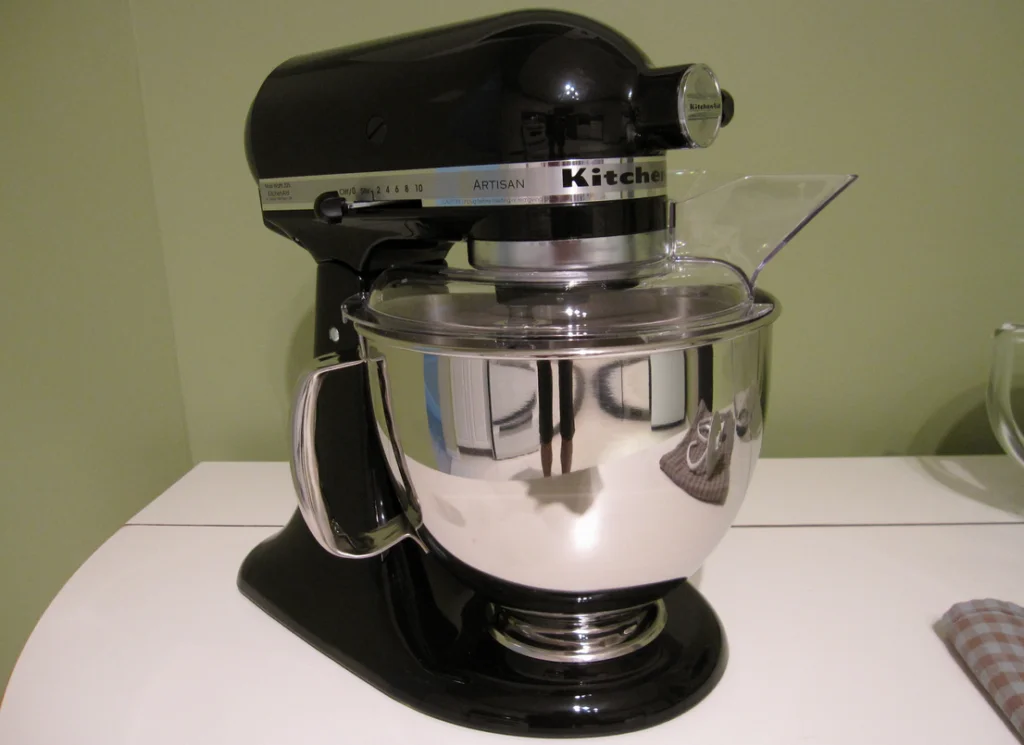
That heavy-duty KitchenAid stand mixer in harvest gold or avocado green wasn’t just a wedding gift—it was a lifetime commitment. With a motor strong enough to knead bread dough and a metal construction that could withstand drops onto linoleum floors, these mixers represented American manufacturing at its finest moment.
The distinctive rounded design, largely unchanged since the 1930s, became a kitchen status symbol and a promise of culinary ambition. Unlike today’s appliances with their plastic gears and computerized controls, the 1970s KitchenAid consisted of simple, replaceable parts that could be repaired rather than requiring complete replacement. Many families still use their original 1970s models today, perhaps with a replacement beater or bowl but with the same powerful motor still purring along after thousands of batches of cookies and countless birthday cakes.
6. The Corning Ware Casserole Dishes
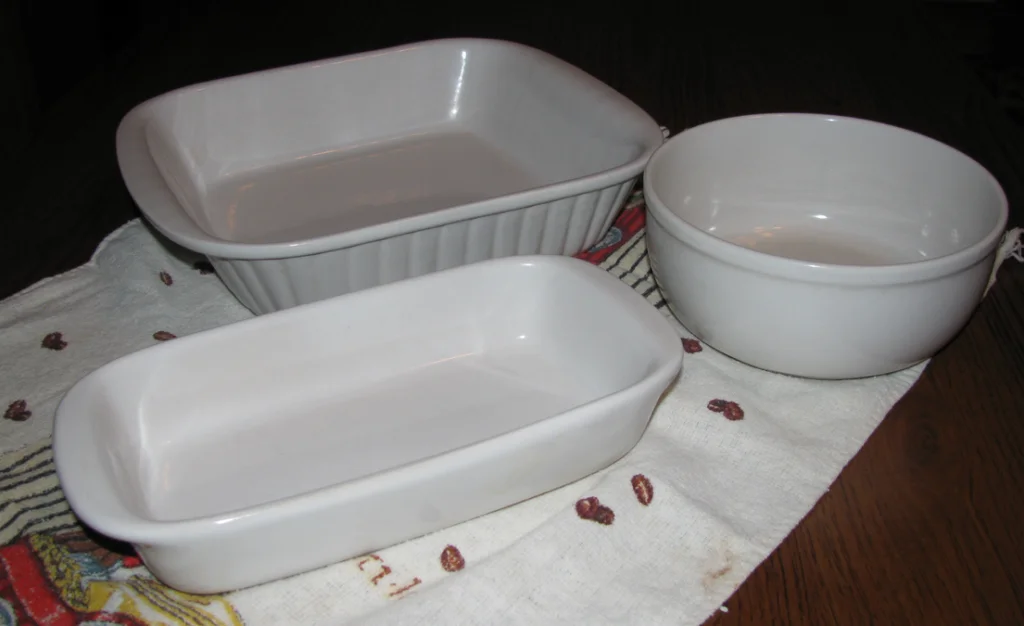
Those blue cornflower-patterned casserole dishes weren’t just cookware—they were culinary Swiss Army knives that went from freezer to oven to table with dependable grace. Corning Ware’s pyroceramic glass construction could withstand thermal shocks that would shatter normal dishes, making them perfect for both cooking and serving everything from tuna noodle casserole to Salisbury steak.
The tight-fitting glass lids and portable designs made these pieces perfect for potlucks and church suppers, while their non-porous surface kept them looking new despite years of tomato-based sauces and baked-on cheese. The simple blue cornflower pattern (and later, the “Spice of Life” vegetable design) became so ubiquitous in American kitchens that they’ve transcended their functional origins to become nostalgic icons. Many households still reach for these vintage pieces for holiday meals, the familiar weight and sturdiness providing a connection to family traditions that newer, lighter cookware simply can’t match.
7. Harvest Gold Refrigerators
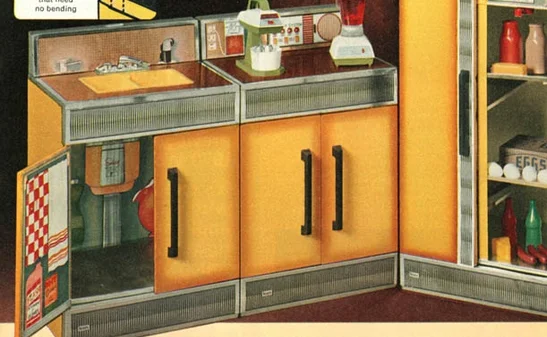
The harvest gold refrigerator humming quietly in the corner of your childhood kitchen seemed like it might outlive you. These General Electric, Frigidaire, and Whirlpool models featured simple mechanical thermostats, manual defrost controls, and metal (not plastic) interior components that endured decades of slamming doors and overpacked freezers.
Unlike today’s feature-laden smart appliances, these refrigerators focused on doing one job exceptionally well—keeping food cold year after year with minimal maintenance. The colored enamel exteriors resisted scratching and fading, while the chrome handles maintained their shine through thousands of openings. Many families used these refrigerators for 25+ years, often relegating still-functioning units to garage duty for extra storage or cold beverages when kitchen remodels finally demanded their replacement.
8. The Atari 2600 Game System
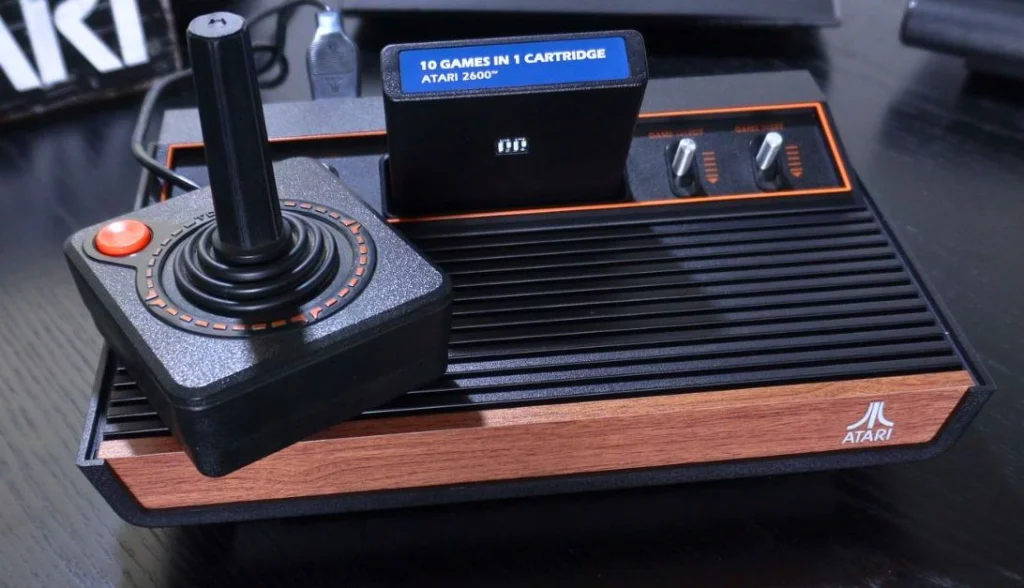
Those boxy Atari 2600 consoles with wood-grain panels and chunky switches were built to survive the enthusiastic button-mashing of multiple siblings. With no internal fan, minimal circuitry, and cartridges that could withstand being stepped on, these early gaming systems had a physical resilience that modern electronics can’t match.
The controllers—simple joysticks with a single orange button—endured countless hours of Space Invaders, Pitfall, and Frogger with mechanical simplicity that rarely failed. Even when problems occurred, solutions were often delightfully low-tech: blowing into cartridges to clear dust or simply unplugging and replugging connections. Many of these systems still function today, finding new life with collectors or being passed down to grandchildren as retro gaming becomes fashionable again—a testament to their simple, durable design philosophy.
9. The Family Encyclopedia Set

That comprehensive set of World Book or Encyclopedia Britannica volumes lining your parents’ bookshelves represented both a significant financial investment and a commitment to your education. Purchased from door-to-door salesmen (often on installment plans), these leather-bound volumes with gold-embossed lettering contained what seemed like all human knowledge arranged alphabetically at your fingertips.
The heavy, acid-free pages and quality bindings were designed to last generations, with annual yearbooks available to keep information current in the pre-internet era. These weren’t just reference materials but status symbols that signaled educational aspirations and middle-class values. While their informational content eventually became outdated, the physical books themselves remained virtually indestructible, with many complete sets still occupying bookshelves or being repurposed as vintage decor elements fifty years after their purchase.
10. The Sunbeam Mixmaster
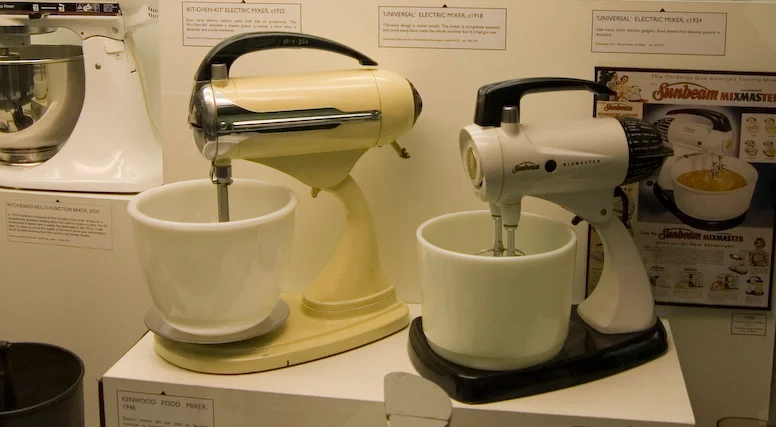
The Sunbeam Mixmaster with its distinctive shape and powerful motor represented American engineering excellence in an everyday appliance. Unlike today’s lightweight hand mixers, these countertop workhorses featured heavy-duty motors, metal construction, and a planetary mixing action that could handle everything from whipped cream to heavy cookie dough.
The intuitive speed controls and bowl-rest feature reflected thoughtful design that prioritized function over fashion, while still maintaining the curved aesthetic that defined mid-century kitchen appliances. Many families used these mixers for decades, occasionally replacing the beaters but rarely experiencing motor failure despite countless batches of birthday cakes and holiday cookies. The familiar whirr of the Mixmaster became part of the soundtrack of American home baking, with many still in use today as cherished heirlooms or sought-after vintage finds.
11. The Tupperware Collection

Those pastel-colored plastic storage containers weren’t just kitchen accessories—they were cultural phenomena supported by dedicated “Tupperware parties” and a lifetime guarantee. The distinctive burping seal that created an airtight environment for leftovers represented cutting-edge materials science applied to everyday problems of food preservation and storage.
Unlike disposable modern plastic containers, Tupperware was designed to last decades without warping, staining, or losing its seal effectiveness. The modular designs stacked efficiently in refrigerators while the measuring cups and specialized containers (like the iconic pickle keeper or lettuce crisper) solved specific kitchen challenges with elegant simplicity. Many families still use their original 1970s Tupperware, the once-modern designs now cherished as retro collectibles that connect multiple generations through shared meals and preserved leftovers.
12. Vinyl Record Albums
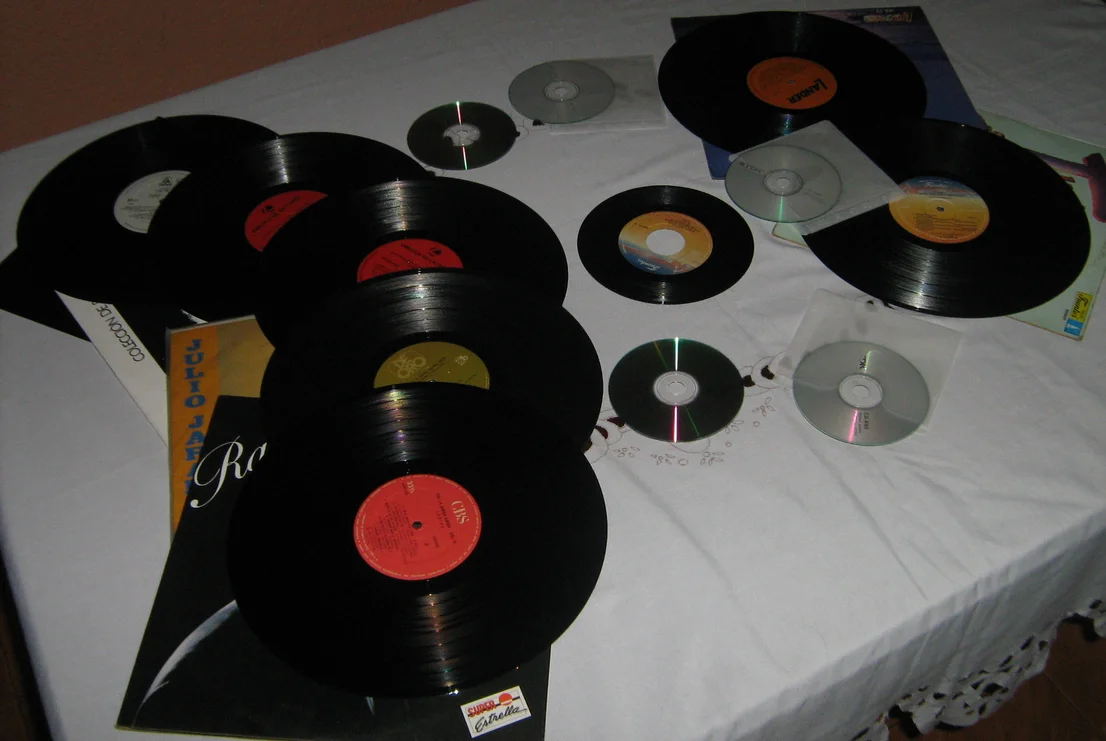
Your parents’ record collection wasn’t just music storage—it was a tangible music library with album art as visually important as the music itself. Those cardboard sleeves housing 12-inch vinyl discs from Fleetwood Mac, Pink Floyd, or Carole King represented physical media designed to be handled, displayed, and experienced rather than streamed and forgotten.
Despite their relatively delicate nature, properly cared-for vinyl records have survived decades of play with minimal degradation, their analog grooves still delivering warm sound that digital formats struggle to replicate. The album covers doubled as cultural artifacts displaying artistic photography and design that influenced fashion and interior decoration throughout the decade. Many original 1970s vinyl records not only remain playable today but have become valuable collectibles sought after by new generations discovering the tactile pleasure of physical music media.
13. The Singer Sewing Machine
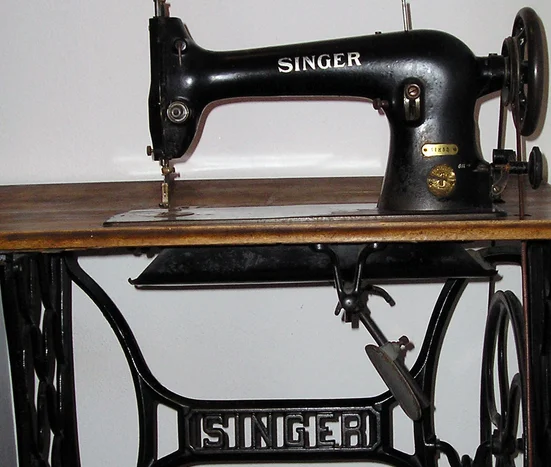
That heavy Singer sewing machine in its sturdy carrying case represented domestic self-sufficiency in an increasingly store-bought world. Whether the avocado green portable model or the built-in cabinet version, these machines featured all-metal gears, simple tension systems, and straightforward mechanical controls that rarely required professional servicing.
Unlike today’s computerized models with their complex electronic stitching patterns and plastic internal components, the 1970s Singer focused on performing basic functions flawlessly year after year. Many families used these machines to create everything from Halloween costumes to living room curtains, maintaining clothing through patches and alterations rather than replacement. These mechanical workhorses continue to function decades later, often preferred by serious sewists for their reliability and repairability compared to newer, feature-laden but less durable machines.
14. The La-Z-Boy Recliner
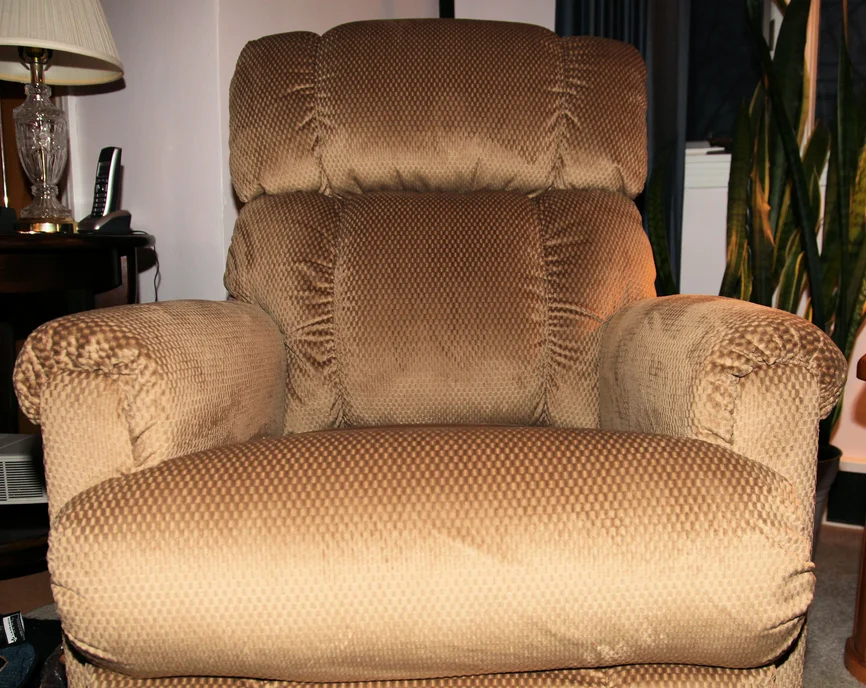
Dad’s La-Z-Boy recliner wasn’t just seating—it was his domestic throne, engineered to last through countless football games, naps, and family movie nights. The heavy wood frame, metal reclining mechanisms, and industrial-grade upholstery (usually in earth tones, plaids, or nugget-textured fabrics) created a fortress of comfort that could support generations of family use.
The chair’s internal spring system and dense cushioning maintained their shape despite daily use, while the reclining mechanism operated smoothly after thousands of cycles. Unlike today’s lighter-weight furniture designed for visual appeal and quick replacement, the 1970s La-Z-Boy represented a significant household investment expected to last decades. Many families still have their original 1970s recliners, perhaps reupholstered but with the same solid frame and reliable mechanism still cradling a second or third generation of football fans and Sunday nappers.
The durability of these 1970s household items wasn’t accidental but reflected a manufacturing philosophy that valued longevity over novelty and quality over rapid replacement. As modern consumers increasingly question disposable culture and seek sustainable alternatives, these artifacts from the disco decade remind us that products can be built to last generations rather than seasons—a lesson worth remembering as we stock our own homes with items we hope might become tomorrow’s heirlooms.


